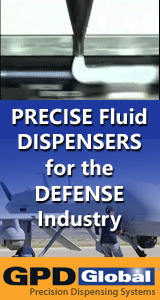Of course there are solvents which are less harmful to the environment than others. The operative phrase is �less harmful�. As a rule, water-based chemistries are �greener� than solvents. There are some solvent blends designed for aqueous-based equipment that are relatively environmentally safe. The other issue is human safety. Look at the health and reactivity sections of the MSDS. Most solvents have higher numbers in these sections. Other issues like flashpoint, flammability, odor, and discharge requirements will likely encourage one to consider aqueous-based chemistries.
Another generality is the higher cost of solvent-based equipment over an aqueous-based system. Aqueous-based systems normally cost less than solvent systems.
Finally, look at costs. Assuming identical levels of cleanliness, most solvents cost considerably more than an aqueous blend. The operational costs of solvents are normally higher than aqueous chemistries due to higher equipment costs, high evaporation rates, high and disposal or treatment fees.
Solvent cleaning has its place in de-fluxing, albeit a smaller and smaller place.
Regarding the cleaning of boards prior to reflow� This is a very good idea. This can be accomplished in a vapor degreaser using solvent (with all of the environment, safety, and cost pitfalls listed above) or it can be done (and is commonly done) in an aqueous cleaning system. One advantage of using a modern aqueous-based cleaning system is the ability to pre-program a desired cleanliness level for your boards. Most modern cleaning systems support real-time cleanliness testing, a feature not available on vapor degreasers. Most of the manufacturers listed on my previous posting have this feature available.
Mike Konrad Aqueous Technologies 909.944.7771 ext 29 konrad@aqueoustech.com
http://www.aqueoustech.com
reply »
![]() I am considering using a vapor degreaser to clean PCB's afte...
- Jan 10, 2006
by
I am considering using a vapor degreaser to clean PCB's afte...
- Jan 10, 2006
by
![]()
![]() Flashback time� Vapor degreasers, although still used in li...
- Jan 10, 2006
by
Michael
Flashback time� Vapor degreasers, although still used in li...
- Jan 10, 2006
by
Michael
![]()
![]()
![]() arent there environmentally friendly solvents (i have seen s...
- Jan 10, 2006
by
arent there environmentally friendly solvents (i have seen s...
- Jan 10, 2006
by
![]()
![]() Of course there are solvents which are less harmful to the e...
- Jan 10, 2006
by
Michael
Of course there are solvents which are less harmful to the e...
- Jan 10, 2006
by
Michael
![]()







.gif)